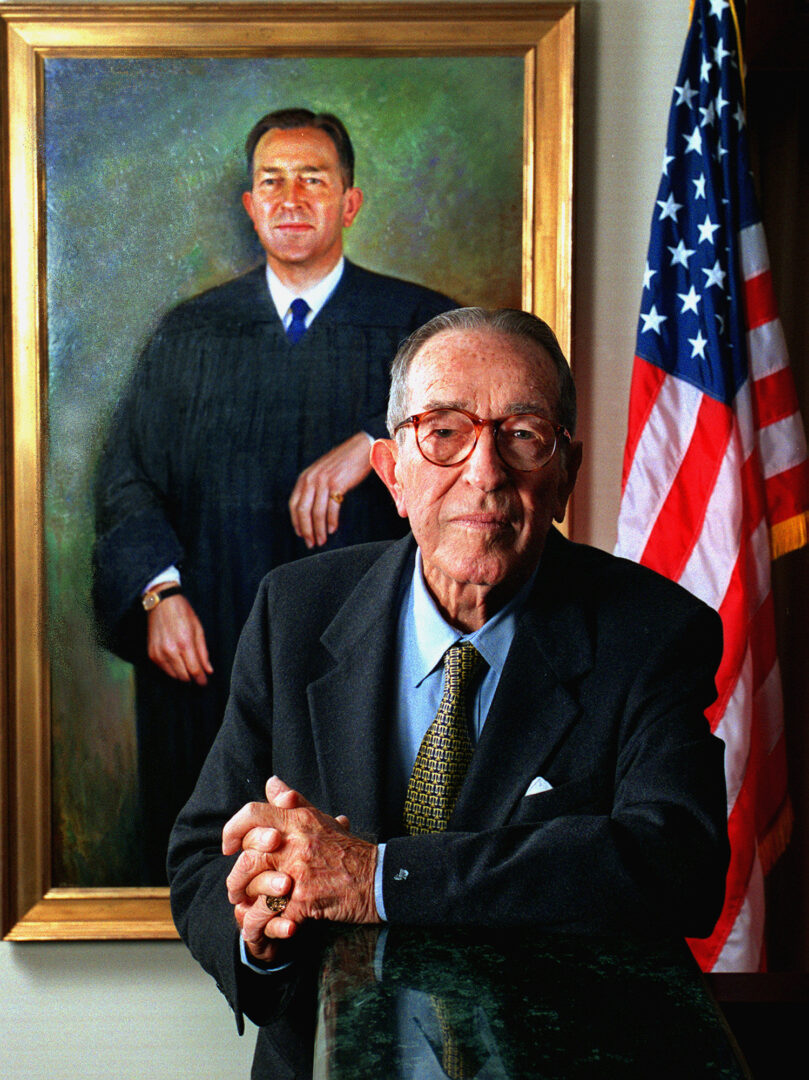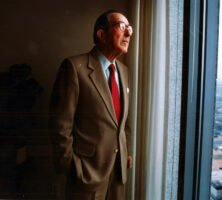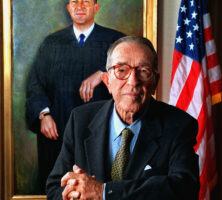Griffin Bell was the seventy-second attorney general of the United States and a major figure in the American legal profession in the last half of the twentieth century. Griffin Boyette Bell was born in rural Sumter County on October 31, 1918, to Thelma Leola Pilcher and Adlai Cleveland Bell, a cotton farmer. He was raised in the Shiloh community just outside Americus. Forced by the advance of the boll weevil to leave the farm and move into Americus, Adlai Bell (a second cousin of Reason C. Bell, later a chief justice of the Georgia Supreme Court) eventually established a successful tire retail store in the town and became politically active there, while his son Griffin proved himself a superior student in the Americus public schools.
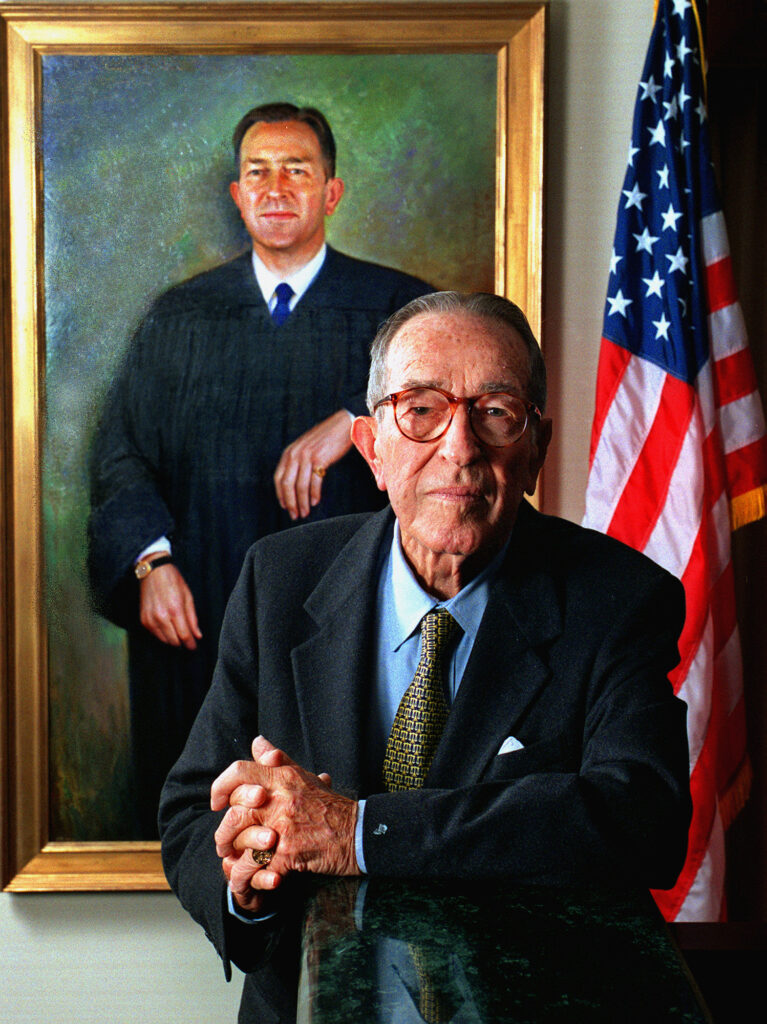
Courtesy of Atlanta Journal-Constitution.
After a period as a student at Georgia Southwestern College (later Georgia Southwestern State University), Bell left school to work in his father’s tire store in 1942. In the same year, he was drafted into the army, where he served in the Quartermaster Corps and Transportation Corps during World War II (1941-45). While stationed at Fort Lee, Virginia, he met and married Mary Powell, whose family roots lay in Sumter County; they had one son, Griffin Jr. Discharged from active duty in January 1946 with the rank of major, Bell enrolled in the law school at Mercer University in Macon, where as a student he was employed by the firm Anderson, Anderson, and Walker. While still a law student he passed the Georgia bar examination and was appointed city attorney of Warner Robins. After graduating with honors in 1948, he practiced law in Savannah and then Rome. In 1953 he accepted an offer to join the Atlanta law firm of Spalding Sibley Troutman and Kelley, later renamed King and Spalding.
Bell arrived in an Atlanta perched on the edge of unprecedented economic and physical development. The city was also on the verge of the social and political tensions unleashed by the historic U.S. Supreme Court decision in Brown v. Board of Education (1954), which dismantled the “separate but equal” doctrine of segregation in public education. As the managing partner at King and Spalding, Bell was drawn into Georgia political life, and in 1958 he was appointed chief of staff to Governor Ernest Vandiver. In that capacity Bell was influential in organizing the Sibley Commission, which mapped Georgia’s approach to school desegregation. He helped moderate state policy concerning civil rights and was instrumental in keeping Georgia’s schools open during that turbulent period.
Bell served as a chair of John F. Kennedy’s 1960 U.S. presidential campaign, and in October 1961 President Kennedy appointed him judge of the Fifth U.S. Circuit Court of Appeals, where he actively participated, often as a moderate voice, in the implementation of desegregation orders across the Deep South.
Bell returned to King and Spalding after fourteen years on the bench, but in 1976 the newly elected U.S. president Jimmy Carter nominated him to the position of attorney general of the United States. After a difficult confirmation process, in which the NAACP and others questioned his membership in private segregated social clubs, his role in the Vandiver administration, and some of his decisions on school integration while on the Fifth Circuit bench, Bell was confirmed as attorney general on January 25, 1977, by a Senate vote of 75-21. During his tenure in that office he did much to restore public confidence in the U.S. Justice Department as well as morale within the department, which had been damaged during the Watergate era under U.S. president Richard Nixon. He was also central in fashioning federal policy in affirmative action and environmental protection.
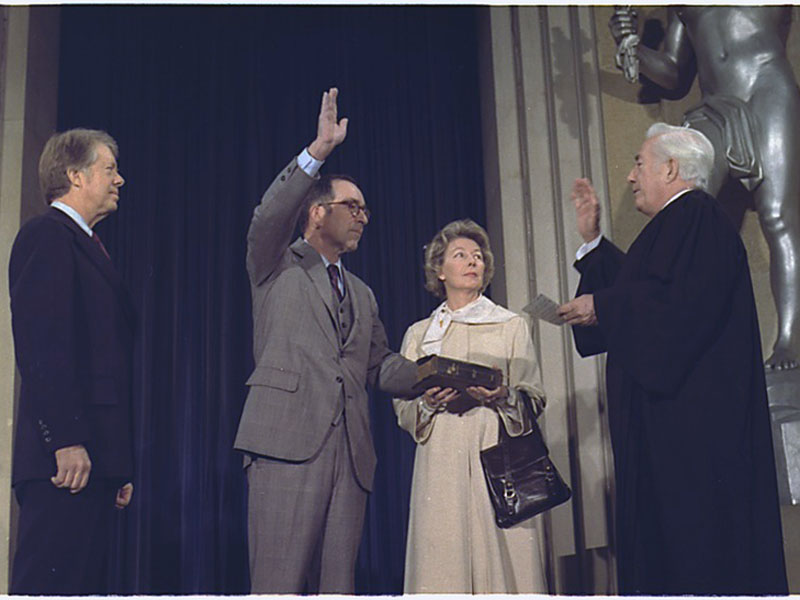
Photograph from the National Archives and Records Administration
Bell resigned the position in August 1979 to return to the practice of law in Atlanta. Over the next three decades he held senior management positions with King and Spalding and maintained a prominent profile in community and national affairs. In 1980 he headed the U.S. delegation to the Madrid Conference on Security and Cooperation in Europe, and two years later served as a cochair of the Attorney General’s National Task Force on Violent Crime. In a private capacity he headed investigations into E. F. Hutton’s financial management in 1985 and into the Exxon Valdez oil spill in 1989. In the late 1980s President George H. W. Bush appointed him to a senior position on the Commission on Federal Ethics Law Reform. Bell also published two books, Taking Care of the Law (1982) and Footnotes to History (2008).
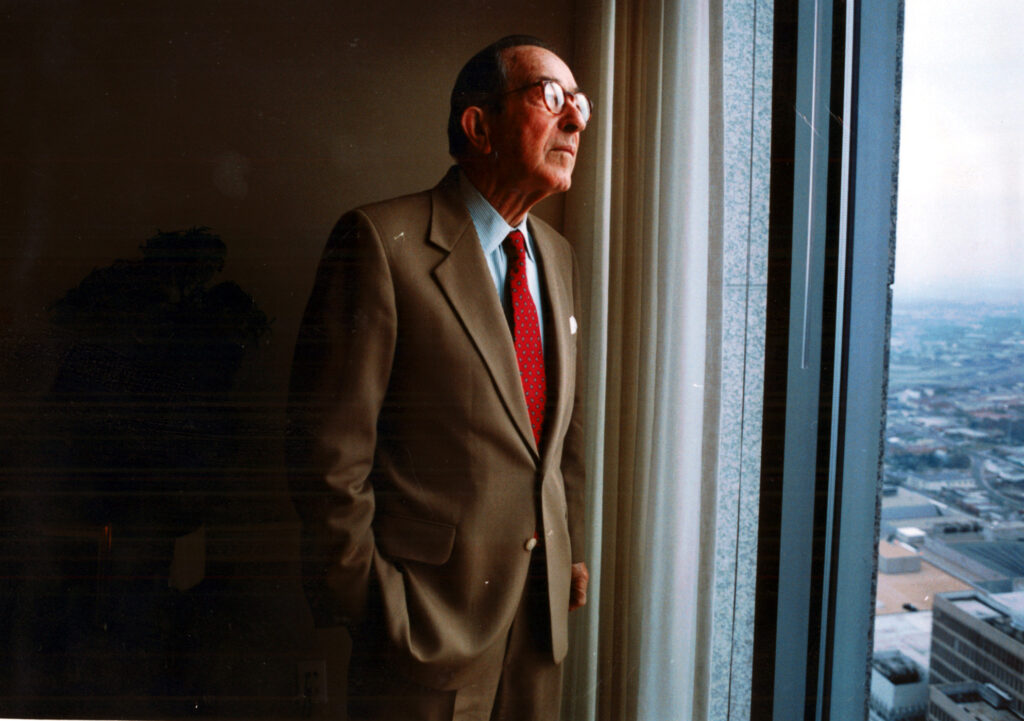
Courtesy of Atlanta Journal-Constitution.
Bell died of kidney failure at Piedmont Hospital in Atlanta on January 5, 2009.






